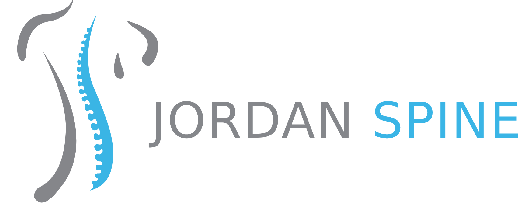Contents:


And even if they do understand them, they might not be able to take their full advantage and may end up calculating the unfair tax on their own. There can be a difference in tax liability and tax payable as common people might not be able to take advantage of various tax-saving opportunities. They might have to reach out to tax experts to seek guidance, which would have an economic cost of its own. These scenarios are very common in developing economies.
Fact-Checking CNN’s Deceptive Narrative About Illegal Alien Tax … – Federation for American Immigration Reform
Fact-Checking CNN’s Deceptive Narrative About Illegal Alien Tax ….
Posted: Mon, 24 Apr 2023 14:17:42 GMT [source]
However, one should not underestimate its importance in bringing equality and upliftment to the weaker sections of society. Without a proper taxation structure, economies may crumble as there will be no capital to improve infrastructure, which can have catastrophic effects on the economy. If the taxation rules are unclear or have too many twists and turns, it would be difficult for the common public to understand them.
Tax principles
Thus, we expected that the tax exempted amount is more decisive for the endorsement of a wealth tax than the tax unit or tax rate. Figure 2 displays the distribution of tax endorsement across all respondents in each country. Roughly 20% of responses in each country are neither in favour of nor in opposition to a specific wealth tax design. In general, respondents tend to prefer extreme (−5 and +5) as well as indifferent positions . Interestingly, outright agreement is more pronounced in Germany (almost 20%), whereas complete disagreement is most prevalent in the USA (about 12%). Few individuals indicate only some opposition to the wealth tax.
Tax policy refers almost universally to principles of equity, efficiency and simplicity, with modifications in definition and emphasis in different contexts. We look forward to our members’ active participation at this event and learn about good practices in order to reach a proper level of equity and equality in our tax administrations. In the U.S., half ofpayroll taxesare remitted directly by employers (“employer-side” payroll taxes) while the other half are taken out of workers’ paychecks (“employee-side” payroll taxes). A poor person might spend more because they have extra dependents, for example. As a result, their spending could be greater than that of his coworker in the same salary bracket. However, their spending does not represent their genuine ability to pay.
RELX actively engages with policymakers, tax administrators, industry bodies and international institutions. In addition, we participate in consultations with the Organisation for Economic Co-operation and Development , European bodies and the United Nations. We support the approach of the OECD Framework for formal co-operative compliance regimes.
3 Policy feedback and wealth tax preferences
present value formula and basis of taxation • Basis – Taxation is based on the reciprocal duties of protection and support between the government and its people. – Government receives taxes from the people which is used to perform functions of government and other benefits. We support tax expenditures that increase access to health care, homeownership, and a secure retirement. Tax credits that benefit seniors, the poor, or working families – such as the child tax credit – should also be protected with their refundability maintained. In addition, as our economy continues to recover, we support tax credits to create consumer demand and assist low- and middle-income families such as the successful Making Work Pay tax credit.

Products with longer production chains are thus taxed more. As a 501 nonprofit, we depend on the generosity of individuals like you. Help us continue our work by making a tax-deductible gift today.
The Two Principles of Taxation: Compared and Contrasted
“Employer-side” payroll taxes, however, can bemisleading. While remitted by businesses, they are almost entirely passed on to employees in the form of lower wages. This obscures who bears the burden of the tax and masks the cost to taxpayers of the programs it funds. Some governments choose not to use the benefits principle and instead choose to use a different tax structure that would allow for at least a partial __________ of wealth. The benefit principleis a principle of taxation that holds that there should be some equivalency between what an individual ends up paying in tax and the advantages they get as a result of government actions. They both seek to try to ensure as much fairness as they can with how they allocate the tax burden on different taxpayers.

In making commercial decisions we take tax into account in the same way as any other cost. Where there is more than one way of structuring a commercial business arrangement we will take a holistic view, considering all factors including tax. We respect the rights of governments to determine their own tax regimes, rates of tax and collection mechanisms. A tax should be productive in the sense that it should bring in large revenue which should be adequate for the government. A single tax which brings in large revenues is better than many taxes that bring in little revenue.
Services
Such that certain old taxes are discouraged while new ones are introduced. Diversity It means that there should be variety or diversity in taxation. That the tax base should be wide enough so as to raise adequate revenue and also the tax burden is evenly distributed among the tax payers.
- Any exemptions from a tax should be for a limited period of time and for a specific purpose, after which the exemptions are eliminated.
- The primary goals of comprehensive tax reform should be to progressively raise sufficient revenue to make investments that will grow the economy, and set us on a path for long-term deficit reduction.
- While a clear majority in all three countries generally endorses a wealth tax, our findings show that citizens care more about the amount exempted than the tax unit or rate.
- In all other cases, taxes are collected for general usage.
- A good chunk of the money you give in taxes goes to support agriculture and food programs.
Professor Jones is a frequent speaker at tax conferences and symposia, a past president of the American Taxation Association, and the 2000 recipient of the Ray M. Sommerfeld Outstanding Tax Educator Award. In American Studies, the study of American history/society/culture. She is an instructional designer, educator, and writer. Lewis has taught university accounting for over five years. He has a Master of Business Administration from Keller Graduate School of Management, a Bachelor’s Degree in Accounting from University of Miami, and a Master of Education from the University of the People. By using this service, you agree that you will only keep content for personal use, and will not openly distribute them via Dropbox, Google Drive or other file sharing servicesPlease confirm that you accept the terms of use.
Distribution of tax burdens
What equality really means here is that the rich people should pay more taxes and the poor pay less. This is because the amount of tax should be in proportion to the abilities of the taxpayer. It is one of the fundamental concepts to bring social equality in the country. The canon of equality states that there should be justice, in the form of equality, when it comes to paying taxes. Not only does it bring social justice, it is also one of the primary means for reaching the equal distribution of wealth in an economy.
ERGO Analysing Development Impacting Business: Third Judge of … – Lexology
ERGO Analysing Development Impacting Business: Third Judge of ….
Posted: Mon, 24 Apr 2023 09:27:03 GMT [source]
This concept is based on the assumption that individuals at similar levels should have the same tax obligation. This principle guides the regulators or lawmakers to ensure that a realistic distribution policy is in place. How simple it may sound, it is easily and equally violated in national and international circles. The basic reason is that lawmakers consider their duty to uplift the poor and weaker sections of society compared to the privileged ones. Hence more often than not, you would see farmers and homemakers getting relaxed reforms compared to the middle and service classes. However, it remains debatable if this deviation is the right option.
Paying a toll, for instance, charges someone based on how frequently they travel over a specific road or highway. A high level of usage for that road or highway results in a higher amount of money you end up paying. After all, every time you need to use that road you end up paying the toll. In the end, you spend more than someone who only uses that road or highway once in a blue moon. The ability-to-pay taxation principle states that people with greater earnings should give a higher percentage of their income in taxes than those with lower earnings.

Taxes are the most important source of public revenue. Any tax can be defined as an involuntary payment by a tax payer without involving a direct repayment of goods and services (as a “quid pro quo”) in return. In other words, there are no direct goods or services given to a tax payer in return for the tax paid. The tax payer can, however enjoy goods or services provided by the government like any other citizen without any preference or discrimination. Taxes can be progressive, regressive, or proportional. Progressive taxes increases with an increase in an individual’s or household’s income.
